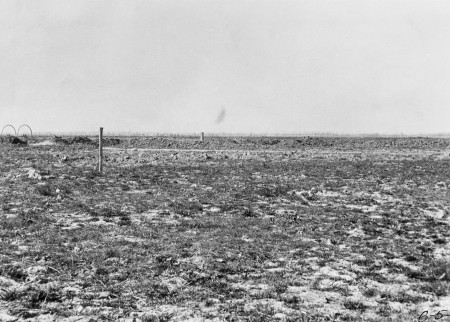Bullecourt
First Bullecourt 11 April 1917
 By 1917, Albert Jacka was an experienced and skilled soldier. The first Australian to be awarded a Victoria Cross in WWI for action at Gallipoli, he might well have been awarded another at Pozières. When told of the plans for the assault on the Hindenburg Line in April 1917, Jacka went out into no-man’s-land to have a look for himself. He was appalled by what he discovered.
By 1917, Albert Jacka was an experienced and skilled soldier. The first Australian to be awarded a Victoria Cross in WWI for action at Gallipoli, he might well have been awarded another at Pozières. When told of the plans for the assault on the Hindenburg Line in April 1917, Jacka went out into no-man’s-land to have a look for himself. He was appalled by what he discovered.
He found flat, level farm land with no hint of protection, not even small indentations where a man might shelter. Then there were the massive belts of German barbed wire in front of the trenches, completely undamaged by any artillery in recent times. All this amounted to an impenetrable barrier for the infantry; “pure murder”, Jacka reported, to send men against this uncut wire.
But it was worse than that. The generals had decided that, as surprise would be the best method of attack, they would not put in the usual artillery bombardment. Instead, the troops would be protected not by guns but by tanks – a new and untried weapon. British General Sir Hubert Gough decided that with 12 tanks to go into battle beside them, the soldiers would prevail. Jacka was furious when he studied the plan and pleaded his case – but no-one was listening.
Early in the morning of 10 April 1917, Australian troops massed at their start lines, bitterly cold and in incredible danger if discovered. The tanks failed to arrive and the battle had to be postponed. The Germans watched silently as men rose from the ground in front of them and walked back to their own lines. The surprise that the generals had hoped for was now entirely lost.
The next morning the troops were at their start lines again when they heard the tanks growling and coughing their way to the front line. They were hopeless, becoming bogged and a target for German fire. Soldiers watched in amazement as tank crews abandoned their machines in the face of the deadly assault and made a dash for safety. There was nothing for it, the infantry must advance unassisted, and they did; across the snow-covered field, into the uncut wire, and remarkably, some even made it into the German trenches.
The 4th Brigade had gone into the fight with about 3,000 troops. Roll calls in the four battalions after the battle would show that the brigade had suffered 2,339 casualties, nearly 1,000 of whom had been captured. The brigade and Victoria’s 14th Battalion, which was part of it, were crippled. The 14th Battalion had lost 19 officers and 582 other ranks.
Second Bullecourt 3 May 1917
Great bravery was shown by the Australians at Bullecourt in the attempt to take a section of the Hindenburg Line without the support of the artillery. It was, however, considered to be bad use of the soldiers in General Gough’s care. Charles Bean wrote – “the [troops] had been employed in an experiment of extreme rashness, persisted in by army commanders after repeated warnings, and that the experiment had failed with shocking loss.” He was scathing in his criticism of General Gough, describing him as working with “almost boyish eagerness” and breaking rules that would have been observed by even a platoon commander.
In May, the Australians were asked to do it again, despite the losses sustained up to that point. This time the artillery had managed to break up the swathes of wire in front of the German trenches. The battle began on 3 May with the Australians penetrating the Hindenburg Line – a remarkable achievement in itself. They fought ferociously with the defenders over the next two weeks, inching their way to a commanding position. While all were in awe of the determination and bravery of the Australians, observers were unsure of the strategic advantage of taking the village. Using two Australian divisions, the 5th Division and the 2nd Division, General Gough persisted and eventually German resistance crumbled. The village was captured, the battle won, ‘a small, tactically useless village’ as one historian wrote. The Australians lost around 10,000 casualties at Bullecourt in the two attempts at its capture for no obvious gain.
Did your ancestor serve at Bullecourt? Share your story.





